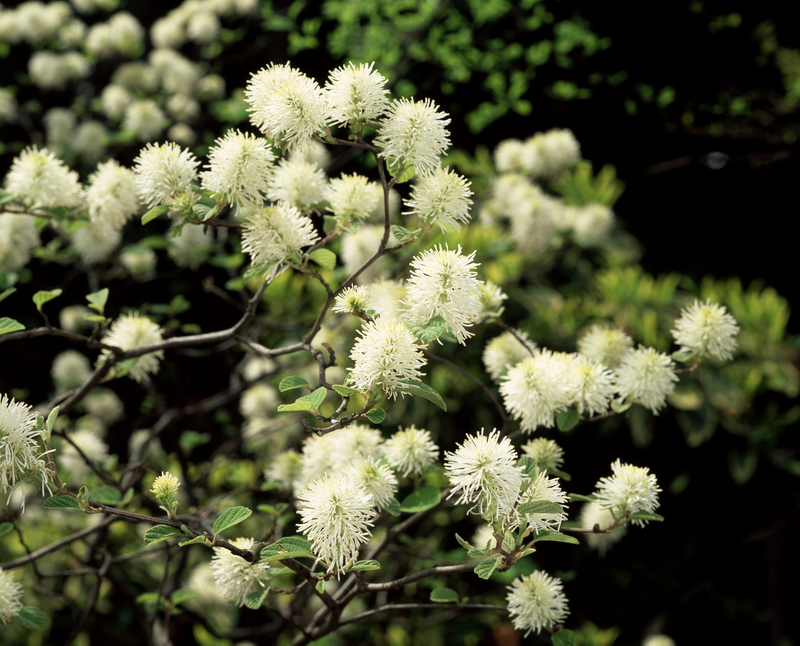Secrets to Building a Durable, Wind-Resistant Garden
Posted on 22/09/2025
Secrets to Building a Durable, Wind-Resistant Garden
Are you tired of seeing your garden battered and destroyed every time a strong wind blows through your area? Building a wind-resistant garden is no longer a secret reserved for expert landscapers and horticulturists. With the right knowledge, strategic planning, and some practical steps, you can enjoy a durable garden that not only survives but thrives even in the windiest conditions. In this in-depth guide, we'll explore the essential secrets to creating a wind-resistant, long-lasting garden--from the best plant choices to landscape design tips, physical barriers, and ongoing maintenance.
The Importance of a Wind-Resistant Garden
Wind can be a powerful force in many climates, capable of causing significant damage to plants, toppling structures, and eroding soil. If you live in a coastal region, on a hill, or in any area prone to gusty weather, creating a windproof garden becomes a necessity. Wind-resistant landscaping not only safeguards your plants and garden features but also enhances the beauty and longevity of your outdoor space.
- Reduces breakage and plant stress
- Prevents soil erosion and loss of nutrients
- Minimizes damage to garden structures and furniture
- Improves microclimates for plant health

Understanding How Wind Affects Your Garden
Before diving into the secrets of a durable garden, it's essential to grasp how wind interacts with different garden elements:
- Plant Stress: Wind strips moisture from leaves and stems, causing water loss.
- Soil Impact: High winds remove topsoil, leading to erosion and poor plant anchorage.
- Physical Damage: Gusts bend, break, or uproot plants and damage light structures.
- Microclimate Shifts: Wind alters temperature, humidity, and pollination patterns.
Secret 1: Smart Garden Design for Wind Protection
Positioning Your Garden
Start by analyzing your site to determine the prevailing wind direction. Position the most fragile or wind-sensitive plants in sheltered spots such as beside fences, walls, hedges, or buildings. If possible, design your garden beds perpendicular to prevailing winds to minimize their direct impact.
Topography Matters
Use natural slopes, dips, or rises in your landscape to your advantage. Valleys and depressions often experience less wind, making them perfect for a wind-resistant garden corner.
Layered Planting
Plant rows of progressively taller species--from low groundcovers to mid-height shrubs and finally, tall trees or hedges--to slow and diffuse wind before it reaches sensitive plants. This layered approach improves resistance and creates a safe haven for delicate flowers or vegetables.
Secret 2: Building Windbreaks & Shelterbelts
What are Windbreaks?
Windbreaks are rows of trees, shrubs, or constructed barriers designed to reduce wind speed over a defined area. Establishing a shelterbelt is among the best ways to make your garden windproof and defend your plants from damage.
Types of Windbreaks
- Living Windbreaks: Hedges or trees (such as evergreen conifers or tall native grasses) planted in clumps or lines.
- Structural Windbreaks: Fences (such as slatted wood, louvered panels, or mesh screens) that let some wind pass through while dispersing the strongest gusts.
Choosing the Right Windbreak Plants
- Evergreen conifers like pine, juniper, or spruce
- Dense ornamental grasses such as Miscanthus or Pampas Grass
- Sturdy shrubs like boxwood, holly, or photinia
- Tough deciduous options such as hawthorn, lilac, or viburnum
Proper Windbreak Placement
Place windbreaks at right angles to the prevailing wind direction and far enough from main planting areas so that turbulence doesn't harm your garden. Be sure to leave gaps for wildlife movement and maintenance access.
Secret 3: Selecting Durable, Windproof Plants
Picking the Best Wind-Resistant Plants
Some plants naturally withstand windy conditions better than others. For a truly durable garden, focus on:
- Low-growing plants (creeping juniper, sedum, lavender) that stay close to the ground
- Flexible-stemmed species (willow, bamboo) that bend rather than snap in wind
- Thick-leaved plants (cactus, agave, ice plant) which lose less water to evaporation
- Native shrubs and grasses adapted to local windy environments
Deep Roots Matter
Select plants with deep, robust root systems--their anchoring power makes them less likely to topple or uproot. Trees grown from seed on site will often develop stronger roots than transplanted specimens.
Mixing Annuals and Perennials
Combine wind-hardy perennials with fast-growing annuals to provide immediate cover while longer-term plants establish themselves. This layered approach maximizes your garden's wind resistance from season to season.
Secret 4: Soil Preparation and Mulching for Wind-Resistant Gardens
Soil Stability
Strong, cohesive soil is crucial for plant health in windy conditions. Add organic matter such as compost or well-rotted manure to improve texture and water retention, making it harder for wind to erode surface layers.
Mulching Techniques
- Apply a thick layer of mulch (wood chips, bark, or gravel) around plant bases to help anchor soil and prevent moisture loss.
- Use groundcovers as living mulch--plants like creeping thyme or sweet woodruff shield the soil from direct wind exposure.
- Water regularly to keep soil compact and less prone to blowing away.
Secret 5: Building Flexible, Strong Garden Structures
Wind-Proof Fencing and Supports
Opt for fences with gaps or slats (e.g., picket, trellis, or mesh screens) to allow partial wind flow. Solid walls can create destructive turbulence on the leeward side, harming your plants. For supporting tall plants or climbers, use strong stakes, guy wires, or trellis systems firmly anchored into the ground.
Wind-Resistant Garden Furniture and Features
- Anchor lightweight furniture or choose heavy, sturdy materials for benches, tables, and ornaments
- Secure greenhouses or cold frames with additional weights, ground anchors, or reinforced panels
- Install robust pergolas/arbors customized for local wind loads
Secret 6: Ongoing Maintenance for Wind-Resistant Gardens
Pruning and Plant Care
Prune trees and shrubs regularly to remove weak, damaged, or dead branches. Shaping plants into compact forms minimizes surface area exposed to windy weather, thus reducing the risk of breakage or uprooting.
Regular Inspections
- Check for loose supports and tighten or replace them as needed
- Monitor windbreak density; fill gaps or thin overcrowded areas for optimal function
- Assess the stability of large plants and re-stake if necessary after extreme wind events
Pest and Disease Management
Plants weakened by pests or diseases are far more susceptible to wind damage. Use organic controls and consistent garden hygiene to keep your garden healthy and resilient.
Secret 7: Embracing Native and Adaptive Gardening
Why Native Plants Excel in Windy Gardens
Native species have evolved to withstand local climate, including wind extremes. They require less maintenance, are more drought-tolerant, and often have the exact characteristics needed for a lasting, windproof garden.
Adaptive Gardening Strategies
- Rotate crops or plantings to identify the most wind-tolerant varieties in your area
- Experiment with microclimates by using raised beds, containers, or protective shade to test new plant types
- Mix flowering plants with wind-resistant vegetables or herbs for diversity and resilience
Advanced Techniques for Wind-Resistant Landscaping
Creating Sunken or Terraced Beds
Sunken beds or terracing can shield plants from direct wind exposure while maximizing water retention. These structures are especially valuable on slopes or exposed sites.
Artificial Barriers and Screens
Where living windbreaks are not an option, install shade cloth screens, mesh fences, or even temporary bamboo panels to create flexible, mobile wind breaks in vulnerable areas.
Companion Planting for Support
Certain companion plants (like sunflowers or tall corn) can serve as living shields for wind-sensitive crops. Use them as natural barriers or supports in vegetable patches.
Essential Tips for a Long-Lasting, Wind-Resistant Garden
- Choose the right plants--native, drought-tolerant, and deep-rooted species
- Install windbreaks of trees, shrubs, or open-work fences
- Group plants by wind tolerance and maintain healthy soil
- Include layers and diversity to provide mutual support and resilience
- Maintain garden structures and support vulnerable plants

Frequently Asked Questions About Wind-Resistant Gardens
Can I build a wind-resistant garden in a small space?
Absolutely! Even in a compact backyard or balcony, use small hedges, container plants, or trellis screens to create miniature windbreaks and protect your most prized plants.
What are the best fast-growing windbreak plants?
Opt for species like privet, laurel, Italian cypress, hybrid willows, or dense grasses like switchgrass or fountain grass.
How far apart should windbreak trees or shrubs be planted?
Spacing depends on species and size at maturity. Generally, plant hedges closely (2-3 feet apart), while larger trees may be spaced 6-15 feet apart for optimal wind reduction.
Do wind-resistant gardens attract wildlife?
Yes, planting living windbreaks and a variety of native species provides habitat and food sources for birds, pollinators, and beneficial insects.
Final Thoughts: Fortify Your Outdoor Sanctuary
Transforming your garden into a durable, wind-resistant oasis is within reach for every gardener. Through smart design, robust plant choices, effective barriers, and regular upkeep, you'll create a space that stands strong against the elements and brings lasting beauty and bounty.
Remember, each wind-resistant garden is unique--observe, adjust, and experiment to find what works best in your location. With persistence and these powerful secrets, your landscaping will not only weather the next storm but will flourish for seasons to come.
Ready to get started? Share your own wind-resistant gardening tips below and help grow our resilient gardening community!

